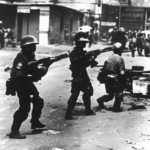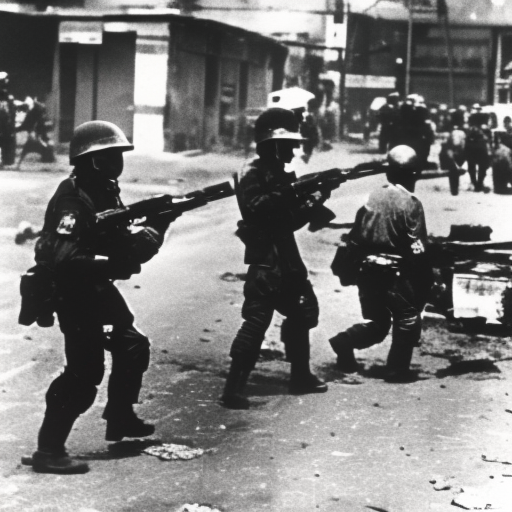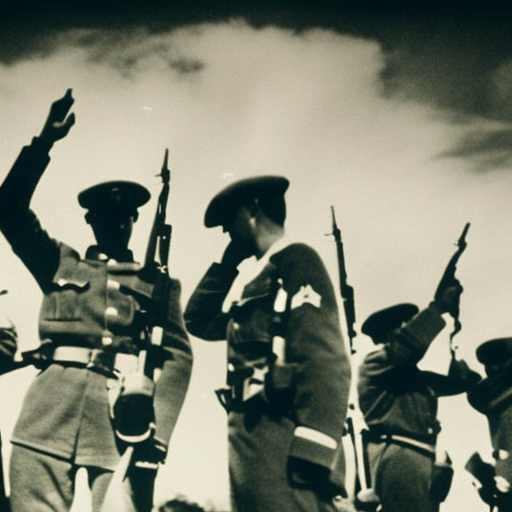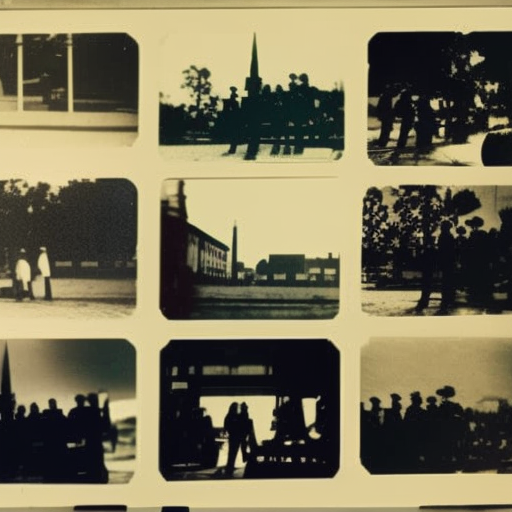The Tet Offensive (1968)
The Tet Offensive was a major military campaign launched by the North Vietnamese and Viet Cong forces against South Vietnam and the United States during the Vietnam War. It began on January 30, 1968, coinciding with the Vietnamese New Year, known as Tet. The offensive was a turning point in the war and had a significant impact on public opinion in the United States.
Background:
The Vietnam War had been ongoing since the mid-1950s, with the United States supporting South Vietnam in its fight against the communist North Vietnamese forces. By 1968, the war had become increasingly unpopular in the United States, with growing opposition to American involvement.
The Offensive:
The Tet Offensive was a coordinated series of surprise attacks by the North Vietnamese and Viet Cong forces on more than 100 cities and towns in South Vietnam. The attacks targeted military installations, government buildings, and major cities, including Saigon, the capital of South Vietnam.
Objectives:
The North Vietnamese and Viet Cong forces aimed to achieve several objectives through the Tet Offensive. They hoped to spark a general uprising among the South Vietnamese population, weaken the South Vietnamese government, and undermine American support for the war. They also sought to demonstrate that the war was far from over and that the United States was not winning.
Initial Successes:
The offensive initially caught the South Vietnamese and American forces off guard. The attackers achieved surprise and quickly overran several key positions, including the U.S. Embassy in Saigon. The offensive also exposed weaknesses in the South Vietnamese military and raised doubts about the effectiveness of American strategy.
Counterattacks and Turning Point:
Despite the initial successes, the North Vietnamese and Viet Cong forces were eventually pushed back by the South Vietnamese and American counterattacks. The U.S. military, with its superior firepower and reinforcements, was able to regain control of the areas that had been captured by the attackers.
Media Coverage and Public Opinion:
The Tet Offensive had a profound impact on public opinion in the United States. The media coverage of the attacks, particularly the shocking images of the U.S. Embassy being breached, led to a significant shift in public perception of the war. Many Americans began to question the government’s claims of progress and victory in Vietnam.
Political Consequences:
The Tet Offensive also had political consequences. President Lyndon B. Johnson, facing mounting opposition to the war, announced in March 1968 that he would not seek re-election. The offensive also contributed to a growing anti-war movement in the United States, with large-scale protests and demonstrations taking place across the country.
Long-Term Impact:
While the Tet Offensive did not result in an immediate military victory for the North Vietnamese and Viet Cong forces, it had a lasting impact on the course of the war. The offensive demonstrated the resilience and determination of the communist forces and eroded public support for the war in the United States. It also marked a turning point in American strategy, with a shift towards de-escalation and negotiations.
In conclusion, the Tet Offensive was a major military campaign during the Vietnam War that had a significant impact on public opinion in the United States. The surprise attacks by the North Vietnamese and Viet Cong forces exposed weaknesses in the South Vietnamese military and raised doubts about American strategy. The media coverage of the offensive led to a shift in public perception and contributed to the growing opposition to the war. While the offensive did not result in an immediate military victory, it marked a turning point in the war and paved the way for eventual negotiations.












